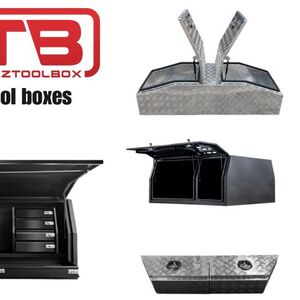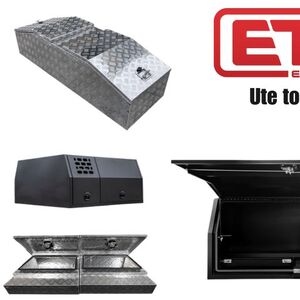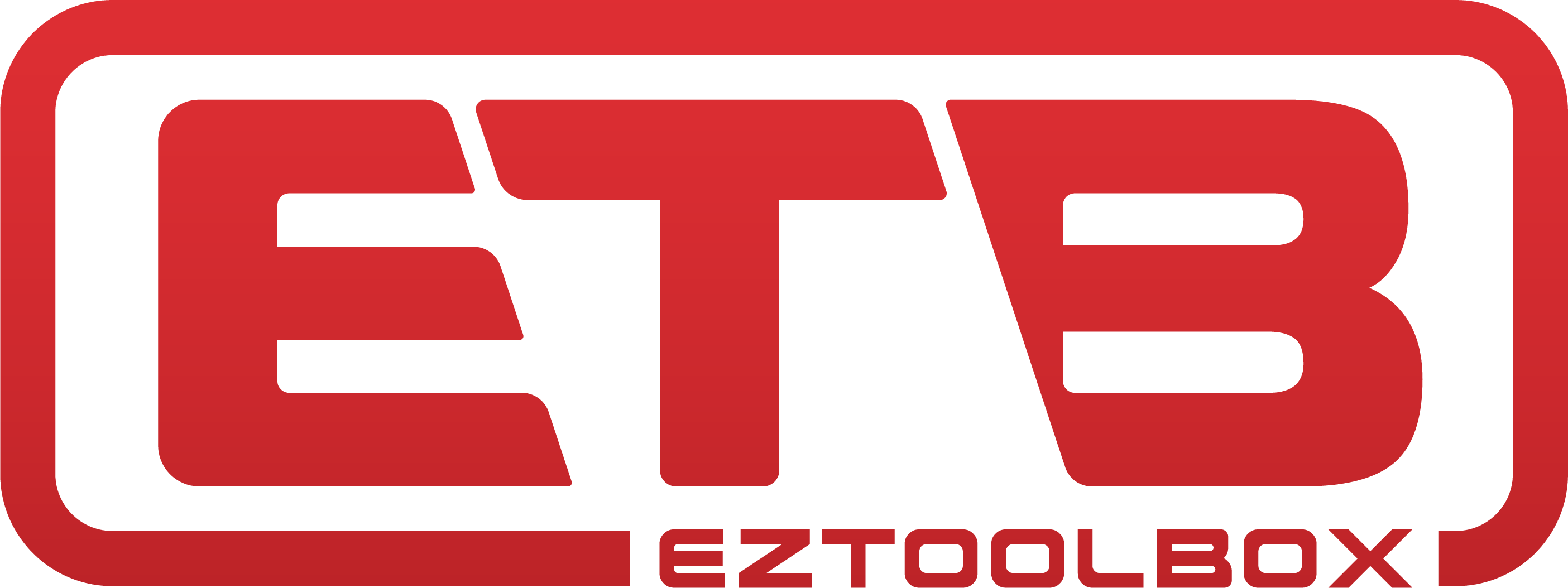Are Your Ute Tool Boxes Legal? Australian Rules Guide


If you’re a tradie, camper, or anyone who uses a Ute in Australia, chances are you rely on a Ute tool box to carry your gear. It’s one of the most useful add-ons for storage, security, and convenience. But did you know that not all tool boxes are legal?
Many Ute owners unknowingly break the law by installing tool boxes that block lights, exceed size limits, or overload their vehicles. These mistakes can lead to fines, insurance problems, or even safety hazards on the road.
Australian road rules and regulations are clear when it comes to vehicle modifications — including tool boxes. Whether you’ve bought a pre-made box or built your own, it must meet legal standards around mounting, visibility, weight, and more. And those rules can vary depending on the state or territory you’re in.
If you’ve ever asked, “Is my Ute tool box compliant?” or “What rules apply to my setup?”, then you’re in the right place.
Are Your Ute Tool Boxes Legal? Australian Rules Guide
In this guide, we will explain everything you need to know about staying legal with your Ute tool boxes in Australia.
Section 1: Why Rules for Ute Tool Boxes Matter
Ute tool boxes may look harmless, but they affect the vehicle’s weight, dimensions, lighting visibility, and safety. Here's why regulations are important:
-
Road Safety: Loose or poorly fitted tool boxes can become dangerous projectiles during accidents or sudden braking.
-
Vehicle Balance: Incorrect weight distribution can affect handling and braking, increasing accident risk.
-
Visibility: Tool boxes may block brake lights, indicators, or number plates, which is illegal.
-
Legal Compliance: Non-compliant accessories can lead to fines, inspection orders, or loss of registration.
-
Insurance Validity: If your setup doesn’t meet road rules, insurers may deny claims after an accident.
Staying within the legal framework ensures both your safety and others on the road.
Section 2: General Australian Requirements for Ute Tool Boxes
No matter where you are in Australia, some basic rules apply across all states. These general requirements should guide your installation and usage:
| Requirement | Details |
|---|---|
| Mounting | Must be securely bolted or fixed using brackets. No loose-fitting units. |
| Weight | Must not exceed Gross Vehicle Mass (GVM) or axle load limits. |
| Visibility | Must not block brake lights, indicators, or number plates. |
| Protrusions | No sharp edges or overhangs that pose injury risks. |
| Width & Height | Cannot exceed 2.5m width or 4.3m height, including the tool box. |
| Stability | The box must not shift during driving or off-road use. |
Make sure any Ute toolbox meets these rules before hitting the road.
Section 3: What ADRs Say About Ute Tool Boxes
The Australian Design Rules (ADRs) are national standards applied to vehicles and accessories. Here are the most relevant ADRs you need to follow for Ute tool boxes:
| ADR Code | Applies To |
|---|---|
| ADR 42/04 | External projections – tool boxes must have rounded edges, not sharp. |
| ADR 13/00 | Lighting – boxes must not block any rear lighting system. |
| ADR 61/02 | Vehicle marking – number plates must be clearly visible at all angles. |
| ADR 43/04 | Vehicle dimensions – compliance with width, height, and overhang rules. |
These rules ensure your Ute remains roadworthy and does not pose hazards.
Section 4: State-by-State Ute Tool Box Rules
While ADRs apply nationally, each state or territory can have its own interpretation or additional rules. Here’s a quick overview:
| State/Territory | Tool Box Rules |
|---|---|
| NSW | Requires engineer certification for large/heavy tool boxes. Must follow VSI 6. |
| VIC | Tool box must not affect visibility or load distribution. Modifications >100kg require notification. |
| QLD | Falls under Vehicle Modification Codes. Installation must be safe and stable. |
| WA | Must follow Vehicle Safety Regulations. Boxes must not interfere with lighting. |
| SA | All modifications must be ADR compliant. No overhang allowed beyond tray. |
| TAS | Tool boxes must not affect vehicle handling. Check GVM compliance. |
| NT | Follows federal ADR guidelines. Ensure lighting and visibility are not impacted. |
| ACT | Mounted boxes must meet safety standards and be declared if part of modification. |
Always check with your local road transport authority before installing or modifying a tool box setup.
Section 5: Common Mistakes That Make Tool Boxes Illegal
Many Ute owners unknowingly break rules when adding tool boxes. Avoid these frequent mistakes:
-
Blocking Brake Lights or Indicators
-
A box that covers any part of your lights is illegal.
-
Add auxiliary lighting if needed.
-
-
Overhanging Beyond Tray
-
Tool boxes that extend past the rear or sides may violate width/length rules.
-
-
Exceeding Load Limit (GVM)
-
Going over your vehicle’s rated capacity affects suspension, braking, and legality.
-
-
Loose Mounting
-
Boxes must be properly secured. Straps and bungee cords are not enough.
-
-
Sharp or Unsafe Edges
-
Non-rounded corners may breach ADR 42/04.
-
-
Wrong Materials
-
Some homemade boxes use unapproved materials that don’t meet fire or strength requirements.
-
Fixing these issues early helps avoid fines and makes your vehicle safer.
Section 6: Legal Ute Tool Box Installation – Checklist ✅
Here’s a simple checklist to help you stay compliant:
✅ Is your tool box securely bolted or mounted?
✅ Does it block any brake lights or indicators?
✅ Is your number plate clearly visible from the rear and at angles?
✅ Is your vehicle still under its GVM?
✅ Are all edges smooth and rounded?
✅ Is the width under 2.5m and height under 4.3m?
✅ Have you declared any major modification if required by your state?
✅ Have you added additional lighting if needed?
Use this checklist before each trip or install to stay safe and legal.
Section 7: Tips to Stay Compliant
Follow these tips to reduce the risk of non-compliance and improve toolbox usage:
-
Use Trusted Brands: Stick with ADR-compliant tool box manufacturers.
-
Avoid DIY Welding or Cutting: Unless you’re certified, modifications should be done by professionals.
-
Check Your Vehicle Manual: Know your GVM and axle load.
-
Add Reflectors: Especially if your box is under-tray or at bumper level.
-
Use Locking Systems: Not just for theft protection but to avoid road hazards.
-
Weigh Your Vehicle: After installation, ensure total weight is within limits.
-
Consult a Vehicle Engineer: Especially if you’re planning a heavy-duty or custom setup.
Section 8: Approved Ute Tool Box Brands in Australia
Buying from reputable brands ensures your tool box is built to meet Australian standards. Here are some of the best:
| Brand | Known For |
|---|---|
| EZ Toolbox | ADR-compliant boxes, custom-fit for most Utes. |
| Ridge Ryder | Available at Supercheap Auto, known for durability. |
| Caddy Storage | Offers certified installation services. |
| MW Toolbox | Aluminium and canopy boxes with compliance ratings. |
| Kings | Budget-friendly and road-legal designs. |
These brands offer options that support compliance and often include product guarantees.
FAQs – Ute Tool Box Legal Compliance in Australia
Q1: Can I install a Ute tool box myself?
Yes, you can. But it must be securely mounted and meet all compliance requirements. If it changes vehicle weight or structure, it might need certification.
Q2: What happens if my tool box blocks my lights?
Your vehicle can be defected or fined. You’ll need to install additional lighting to stay legal.
Q3: Do all states follow the same rules for Ute tool boxes?
Not exactly. While ADRs are national, some state-based rules and modifications require local compliance or engineer sign-off.
Q4: Can tool boxes affect insurance claims?
Yes. If your tool box isn’t compliant, your insurance claim may be denied in the event of an accident.
Q5: Are aluminium tool boxes better than steel?
Aluminium is lighter and often more resistant to corrosion, which helps with GVM limits and long-term safety.
Lastly
Making sure your Ute tool boxes are legal isn’t just about following the rules—it’s about keeping yourself and others safe on the road. A toolbox that’s too heavy, blocks lights, or sticks out too far can lead to fines, failed inspections, and even denied insurance claims. More importantly, it can turn your vehicle into a hazard without you realizing it. Whether you’re a tradie, weekend adventurer, or fleet operator, it's your responsibility to check that your setup meets both national ADR standards and state-specific regulations.
The good news? Staying compliant isn’t hard when you know what to look for—secure mounting, proper visibility, load limits, and smooth edges. Following simple checks before installation and choosing ADR-compliant brands makes all the difference.
Remember, tool boxes are an asset only when they’re legally fitted. Don’t risk your safety, your license, or your insurance over something that’s easy to fix. Take the time to do it right.
Legal tool boxes mean safer roads, longer-lasting vehicles, and peace of mind for every drive.






